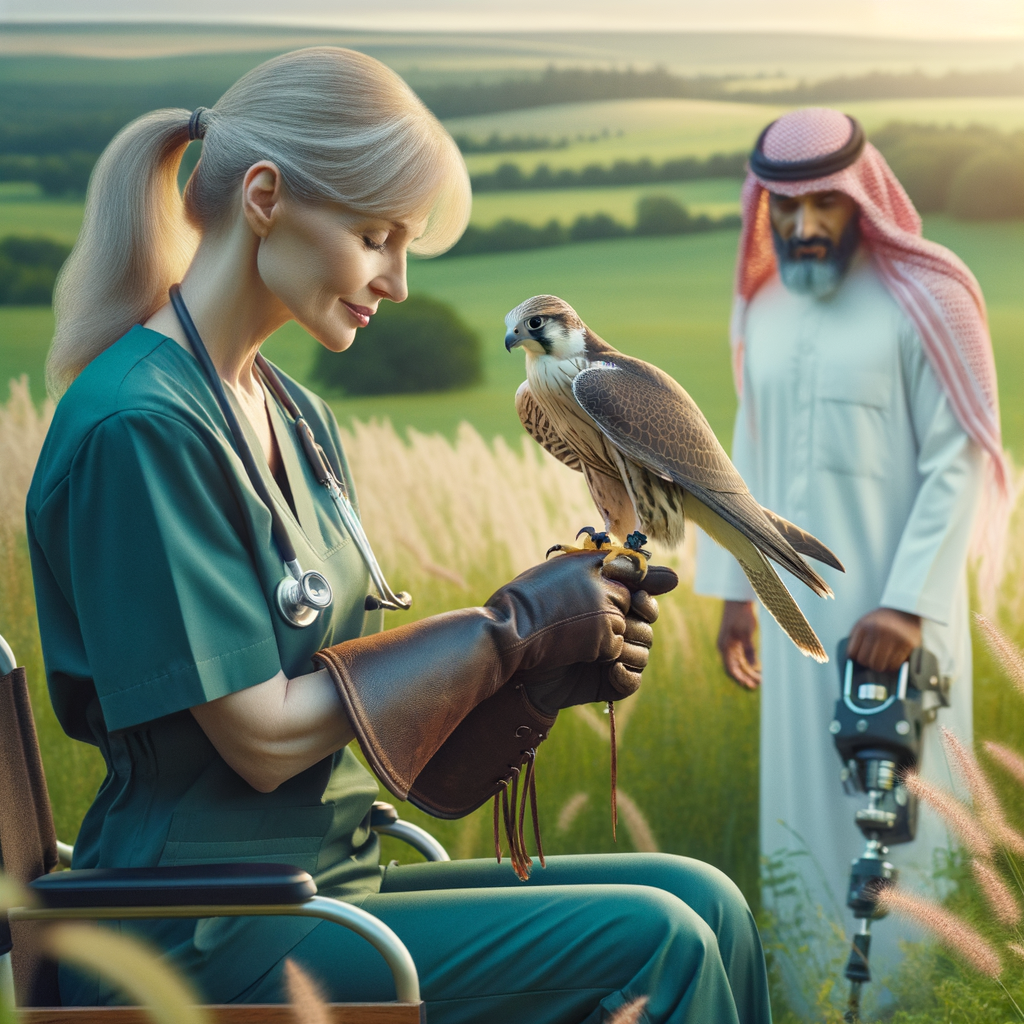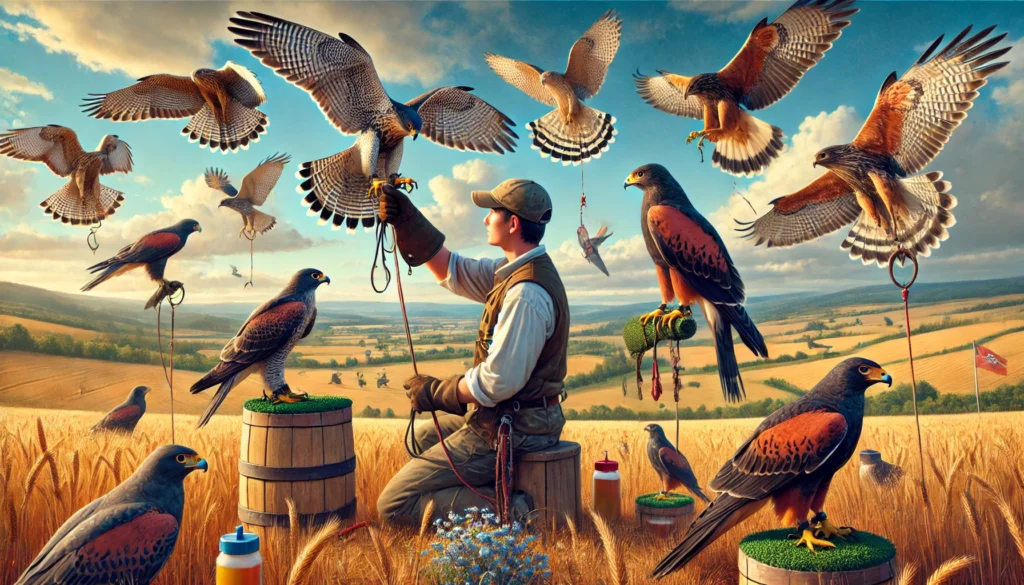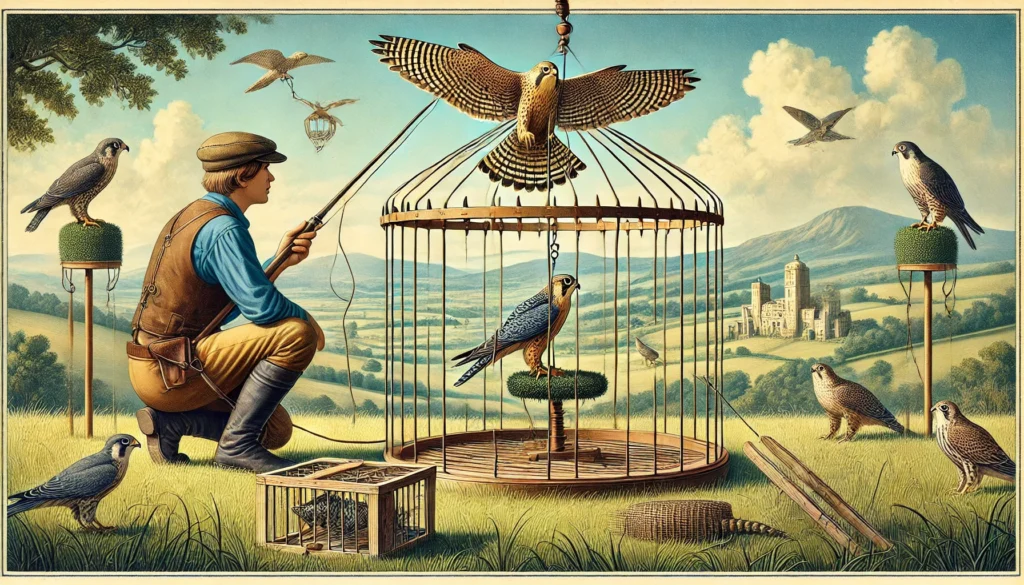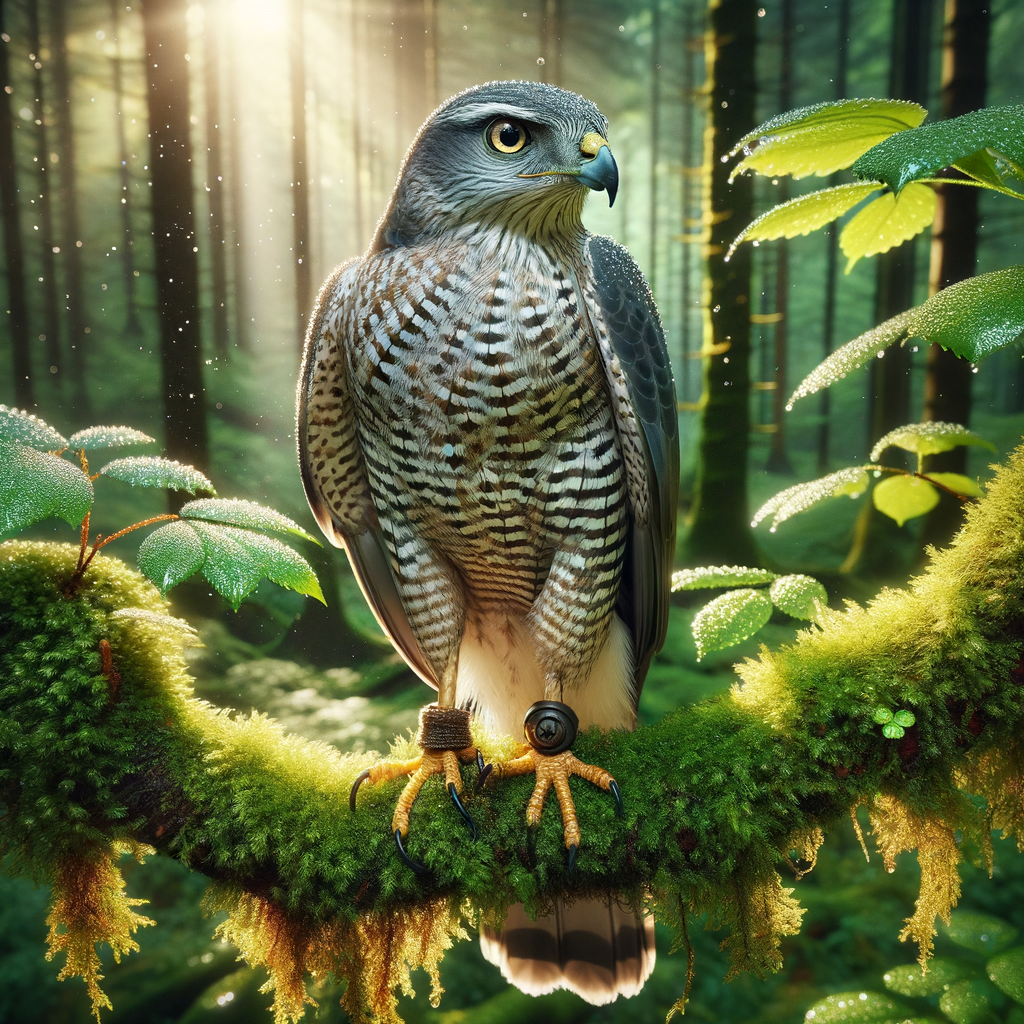Falconry for Rehabilitation Benefits
- Falconry is an age-old practice that involves training birds of prey.
- It offers therapeutic benefits for people with physical and mental disabilities.
- Handling and training birds can improve motor skills and coordination.
- The practice helps in building patience, focus, and responsibility.
- Interacting with birds can significantly reduce stress and anxiety levels.
- Falconry provides a unique and engaging way to reconnect with nature.
- The activity encourages social interaction and builds a sense of community.
- Learning falconry can instill a sense of accomplishment and self-esteem.
- It can be adapted to suit various individual needs and abilities.
- Falconry is a versatile therapy that can complement other therapeutic practices.
Discover How Falconry Heals: An Irish Tale of Strength and Recovery
Picture this: people say that finding a four-leaf clover can bring good luck and renewed hope. Similarly, engaging in falconry can lead to unexpected and heartwarming discoveries about oneself. It’s a journey of building trust, fostering empathy, and gaining a sense of accomplishmentâall through the interaction with these magnificent creatures.
Keep reading to uncover how falconry can be a beacon of light in times of darkness, how it nurtures patience, responsibility, and empowerment, and how it creates unforgettable bonds between humans and birds. Dive into a world where ancient tradition meets modern rehabilitation and learn why this might just be the unique touch needed for a new beginning.
Ready to soar to new heights with us? Let’s embark on this enriching adventure together and see how falconry can be a magical key to recovery and resilience.
The Role of Falconry in Rehabilitating Wildlife
Falconry, an ancient practice of hunting with birds of prey, isn’t just a fascinating hobby or sport. It has a deeper purpose, especially when it comes to rehabilitating wildlife. At Learn Falconry, we believe in the powerful bond between humans and birds of prey, and how this connection can aid in wildlife recovery.
Falconry Rehab: A Healing Process
Falconry rehab involves using trained falcons to assist injured or sick birds of prey in their recovery. When these birds are hurt or weak, they need careful attention and training to regain their strength and hunting skills. This is where falconry comes into play. Trained falconers use their expertise to nurse these birds back to health.
For a broader understanding of falconry’s origins, you can explore our history of falconry page. Learning about the deep historical roots of falconry helps to appreciate its modern applications in wildlife rehabilitation.
Techniques for Effective Wildlife Recovery
Effective wildlife recovery requires a combination of proper care, nutrition, and specialized training techniques. At Learn Falconry, we emphasize using techniques that ensure a bird’s return to its natural habitat with all necessary survival skills. The process involves teaching injured birds to hunt again, flying them outside, and gradually increasing their fitness levels.
For those interested in training aspects, our page on basic training techniques offers detailed insights into the initial steps of falcon training. Advanced training also contributes significantly to the rehab process, ensuring birds are fully prepared to survive in the wild.
Equipment Used in Falconry Rehab
Just like in any other practice, the right equipment is crucial in falconry rehab. Falcons and other birds of prey require specific gear for their care and training â from hoods and gloves to bells and telemetry for tracking their movements.
To get a closer look at the essential tools, check out our section on falconry equipment. Understanding the equipment used in this noble practice helps in appreciating the meticulous efforts put into wildlife rehabilitation.
Success Stories in Wildlife Recovery through Falconry
Numerous success stories underline the effectiveness of falconry in rehabilitating wildlife. Birds that would have otherwise perished due to their injuries get a second chance at life, thanks to the dedicated work of falconers. These stories are a testament to the ancient practice’s relevance in modern wildlife conservation.
For an in-depth perspective on our conservation efforts, visit Falconry and Conservation. This section highlights how falconry contributes to the broader goal of preserving biodiversity and natural habitats.
The Future of Falconry in Wildlife Conservation
As we move forward, falconry continues to evolve with new techniques and technologies, further enhancing its role in wildlife rehabilitation. At Learn Falconry, we’re committed to promoting sustainable and ethical practices to support our beautiful, winged companions.
If you’re curious about how technology is shaping modern falconry, our Falconry Technology page offers a glimpse into the latest innovations and their applications in this timeless practice.
Understanding Falconry for Rehabilitation in 2024
Falconry for rehabilitation is a fascinating and important aspect of wildlife conservation. By using age-old techniques combined with modern technology and legislative support, we can help injured raptors recover and thrive in their natural environments.
Rehabilitation Programs
Falconry rehabilitation programs, such as those provided by the International Raptor and Falconry Center (IRFC), are essential. These organizations focus on giving injured birds the care they need to heal and eventually return to the wild. For example:
- Intermediate Aviaries: These are special spaces where birds can practice flying and hunting before they are released, ensuring they are fully ready to survive on their own.
| Facility Type | Purpose | Example Activities |
|---|---|---|
| Intermediate Aviaries | Space for birds to practice flying and hunting | Flight practice, hunting trials |
| Veterinary Clinics | Medical care and treatment for injured birds | Surgeries, medication |
| Flight Tunnels | Enclosed spaces for birds to regain flight strength | Controlled flights |
Common Causes of Admission
Many birds end up in rehabilitation due to injuries related to human activities. Here are some of the leading causes based on the records analyzed:
- Vehicle Collisions: Most common, accounting for a significant portion of admissions.
- Building Collisions: Birds often fly into windows.
- Lead Poisoning: Particularly during late fall and winter due to hunting activities.
| Cause of Admission | Percentage of Total Injuries |
|---|---|
| Vehicle Collisions | 40% |
| Building Collisions | 30% |
| Lead Poisoning | 20% |
| Fishing-Related Incidents | 10% |
Rehabilitation Success Rates
Different species have varying success rates when it comes to rehabilitation. On average, about one-third of the animals admitted to rehabilitation centers are successfully released back into the wild.
| Species | Success Rate (%) |
|---|---|
| Bald Eagles | 45% |
| Black Vultures | 33% |
| Smaller Raptors (e.g., Kestrels) | 25% |
High-Tech Training Methods
To improve the rehabilitation process, high-tech methods are increasingly being used. This includes:
- Drones: Used to simulate hunting scenarios and improve birds’ fitness.
- Specialized Equipment: Such as swivels, jesses, and gauntlets, which are carefully fitted to avoid injury.
Legislative Efforts and Support
In 2024, significant legislative efforts have been introduced to support wildlife rehabilitation:
- The Wildlife Rescue, Rehabilitation, and Reintroduction Act: Aims to provide support for federal agencies in conserving endangered species and combating wildlife trafficking.
- Grant Programs: Established to fund rehabilitation centers, covering costs such as facility maintenance, food, and veterinary care.
Partnerships and Coordination
The legislation also encourages partnerships and coordinated efforts through the Wildlife Confiscations Network. This network will provide a collective response to wildlife confiscation cases, ensuring birds are swiftly and safely taken to rehabilitation centers.
In summary, falconry for rehabilitation is a crucial part of protecting raptors and other birds of prey. By combining traditional falconry techniques with modern technology and legislative support, we can improve the chances of these magnificent creatures returning to the wild.
The Importance of Falconry for Rehabilitation in 2024
Falconry rehabilitation is making a remarkable difference in the lives of injured raptors and the broader wildlife ecosystem. In 2024, organizations like the International Raptor and Falconry Center (IRFC) are expanding their rehabilitation programs, integrating intermediate aviaries, and using high-tech training methods like drones to improve the survival rates of rehabilitated birds. With the support of the Wildlife Rescue, Rehabilitation, and Reintroduction Act of 2024, which introduces much-needed grants and a cooperative Wildlife Confiscations Network, these efforts are expected to grow even stronger.
Regulatory measures ensure that falconers follow strict guidelines to protect these majestic birds, further aiding in their recovery and conservation. It’s essential for legislation, conservation efforts, and community engagement to continue evolving, as wildlife populations are still facing numerous challenges. Through dedicated work and innovative rehabilitation techniques, we can make a significant impact on the preservation and well-being of our raptor friends and the natural world they inhabit.



